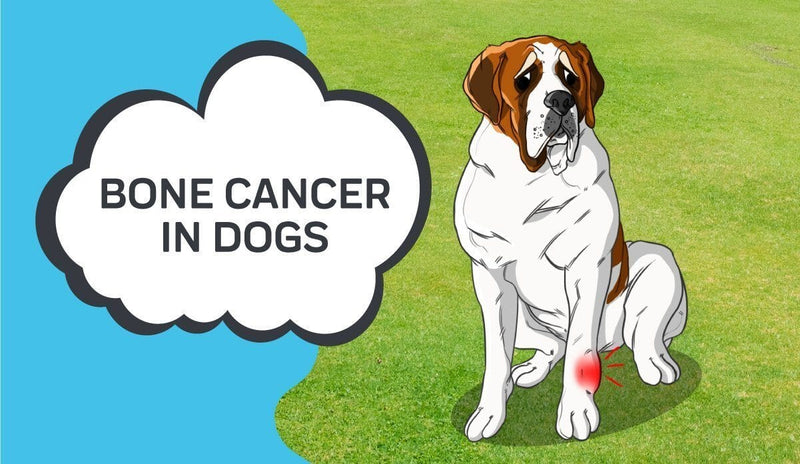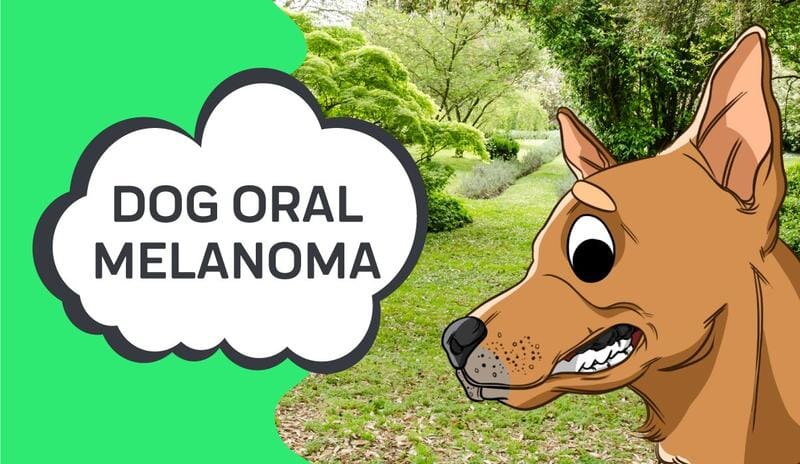- Is Cancer in Dogs the Same as Cancer in Humans?
- Symptoms and Signs of Cancer in Dogs
- How is Cancer in Dogs Diagnosed?
- Types of Cancer in Dogs
- Common Causes of Cancer in Dogs
- Canine Cancer 101: How Do I Choose a Treatment for My Dog?
Is Cancer in Dogs the Same as Cancer in Humans?
Dogs and pet owners both share similar systems, even though we look completely different on the outside. With similar organs and internal functioning comes the propensity for very similar, if not identical, diseases. According to research conducted over the ears, cancer that is diagnosed in dogs has shown to be eerily similar to cases of cancer in human beings.
Studies have been published in a journal, called Cancer Research, by researchers at two North Carolina University schools as well as Duke University. These studies uphold the claim that the types of cancer that affect canines are also nearly the same as the types of cancer human beings face.
More specifically, gene expression in the form of B-cell lymphomas was nearly indiscernible from one another across human and canine cancer samples. This discovery essentially shows that cancer of all kinds seems to evolve in the same way no matter the species.
Now, there are differences between when people are more likely to develop cancer, and when dogs are at a higher likelihood of developing cancer. The age at which dogs develop cancer has more to do with the environment, breed, and overall health of the dog.
Some dogs have a higher cancer risk than others simply based on their breeds. Senior dogs have a higher cancer risk than younger dogs as well. These factors play a significant role with cancers in dogs.
Symptoms and Signs of Cancer in Dogs

The prospect of your dogs contracting cancer at some point in their lifetimes is a very uneasy feeling to experience. While you cannot predict the future, you can familiarize yourself with the symptoms and side effects associated with cancer in dogs. Cancer can affect any breed and when you know what to look out for, you can pick up on signs of cancer in dogs much faster than if you don’t register the symptoms as potential side effects of canine cancer.
Whether your dog is acting differently or not, it’s always wise to know about the signs of cancer in dogs. Early detection is key, so being aware of symptoms could save your dog’s life.
A few symptoms that indicate a possibility of canine cancer include…

- Weight loss
- Loss of appetite
- Uneven skin under the fur
- Hair missing in patches of your dog's coat
- Swelling of the stomach
- Bloated abdominal region
- Unusual discharge from the eyes or nose
- Lack of interest in activities
- Odd smells that you don't recognize
- Wounds on the skin that will not heal on their own
Loss of appetite and weight loss go hand-in-hand, seeing as a loss of appetite contributes to weight loss because your dog won’t be interested in eating. The weight loss will then likely cause your dog to feel queasy at the sight of food creating difficulty eating and contributing to even more weight loss overall.
How is Cancer in Dogs Diagnosed?
The number one goal is to improve your dog's quality of life. In order to maintain a top-tier quality of life for your dog, a cancer diagnosis must first be obtained. A cancer diagnosis is achieved by taking dogs to see specialists that know the right tests to conduct in order to figure out what kind of cancer a dog has.
Usually, professionals will perform cytology, which is a medical term for extracting cells from the tumor. Other times, professionals will actually take an entire tissue sample from a tumor, which is known as a biopsy. If there is a concern that the cancerous cells of the tumor might have spread to other parts of the body, specialists will also take a close look at the surrounding lymph nodes.
Types of Cancer in Dogs
Dogs can contract an array of canine cancers, including but not limited to…

- Bladder Cancer
- Brain Tumors
- Hemangiosarcoma
- Intestinal Epithelial Tumors
- Mast Cell Tumors
- Mouth and Nose Cancer
- Osteosarcoma
- Squamous Cell Carcinoma
- Testicular Cancer
Some of these canine cancers are entirely unique, whereas some of these canine cancers fall into a similar category as other types of cancer in dogs. For example, there are three main types of skin cancer in dogs, which include malignant melanoma, mast cell tumors, and squamous cell carcinoma.
Bladder Cancer
Bladder cancer in dogs is based in the urinary tract of canines. More specifically, bladder cancer is defined as at least one malignant tumor in the urinary bladder of dogs. Known more specifically as transitional cell carcinoma, or TCC, bladder cancer in dogs is always malignant. The tumor starts out in the lining of the bladder, developing from transitional epithelial cells in the bladder lining of dogs.
The larger the cancerous tumor grows, the more it affects the surrounding internal organs, like the kidneys or liver, to name a couple of examples. Male dogs can develop a tumor that impacts the functioning of their prostates as well. Compared to humans, canine bladder cancer is more intensive, often growing rapidly and causing damage to your dog's body in a very drastic way.
Brain Tumors
Brain tumors are another form of cancer in dogs. Most times, pet owners initially realize that their pets might have brain tumors in dogs because their dogs start having frequent seizures. See, seizures are indicative of a brain tumor in dogs.
Not only is it a sign of canine brain tumors, but it is a sign of brain tumors. Though the cause of brain tumors in dogs is still not fully understood, a lot of research points to genetics as the main player in the formation of cancerous cells in the brains of canines. Usually, brain tumors won't appear in dogs unless they are at least five years old.
Of course, this is not to say that brain tumors in youthful dogs is not possible, but it's simply far less common. It depends on a lot of other factors, not only age. The breed of a dog is the main player in the likelihood of a dog getting a brain tumor, too.
Hemangiosarcoma
Hemangiosarcoma is a cancer of the blood vessels. Canine cancer, hemangiosarcoma, involves the formation of cancer cells along the inner walls of healthy blood vessels, thereby tainting them and causing cancer to spread throughout the blood vessels entirely.
Because hemangiosarcoma is a health condition in which cancer cells embed themselves into the inner lining of blood vessels, there is no cure for hemangiosarcoma, all due to the nature of cancer. Sometimes, hemangiosarcoma begins in the walls of nearby internal organs instead of inside blood cells.
Even if the hemangiosarcoma-related tumor cells did not originate directly inside of a blood cell, cancer metastasizes, meaning it spreads from the place of origin to the blood vessels. The spreading of cancer from one part of the body to another usually happens by way of the lymph nodes.
Lymph nodes are known as lymphoid tissue, and these glands are part of the immune system of dogs. If the lymphoid tissue of lymph nodes are infected, the body’s immune system is not able to function as well as it should. When they are infected by diseases such as cancer, they begin to swell up and become inflamed, posing a health concern to the rest of your dog's internal functioning, especially the immune system.
As dangerous as it sounds, the swelling of lymph nodes often acts as the most telling sign of cancer in your dog’s body. When lymph nodes swell, it is almost always a side effect of cancer beginning to metastasize, which indicates serious medical attention is needed immediately.
Not only is hemangiosarcoma not curable, but it is also unbelievably difficult for early detection of cancerous tumors to happen. Hemangiosarcoma is one of the silent but deadly types of cancer in dogs, though it generally appears in dogs that are already approaching their senior dogs years.
There is still a chance that young dogs and little puppies might contract hemangiosarcoma, but the possibility of this hypothetical situation becoming reality is slim to none. Once the detection is possible, dogs rarely live more than six months after the cancer is identified, at best.
Intestinal Epithelial Tumors
Intestinal epithelial tumors are made up of cancerous cells that congregate in the digestive tract of dogs. As digestive tract tumors, intestinal epithelial tumors can be either malignant or benign. The malignant intestinal epithelial tumors are at risk for spreading to other parts of the body, while the benign version of these tumors will stay in one part of the body.
Also, malignant intestinal epithelial tumors are cancerous, while benign tumors are not, which leaves room for tumors in the digestive system to potentially not be cancerous tumors, despite the concern they initially cause. Malignant intestinal epithelial tumors are called adenocarcinomas, for reference.
When these digestive tract tumors are cancerous, they often metastasize before their presence can be detected in the first place. Unfortunately, this means that the treatment of intestinal epithelial lining tumors is more difficult to achieve than other types of cancer, but it doesn't mean your dog cannot heal from cancer of the digestive tract.
The process might just be longer and harder, but nothing is impossible. The earlier the detection occurs, the more likely your pet will bounce back from digestive tract cancer. Malignant intestinal epithelial tumors slowly start making your dog sick over time, which tends to lead to a diagnosis once pet owners recognize their pet seems ill.

Mast Cell Tumors
Mast cell tumors are a type of canine skin cancer. Mast cell tumors are categorized as white blood cells, which are located all throughout the body of your dog. Mast cell tumors are made up of mast cells that have grown at a faster rate than normal.
Since there is rarely ever a singular cause behind the development of cancer in dogs, the cause of canine mast cell tumors is not fully understood. They usually develop in four specific parts of a dog's body, including...
- Bone marrow
- The intestine
- The liver
- The spleen
Nose Cancer

Known medically as nasal cavity cancer, nose cancer in dogs is rooted in the nasal cavity of canines. Located just behind the nose, the nasal cavity is an open passageway that leads from inside the skull to the nose, which leads to the outside of the body.
The two most well common types of nasal cavity cancer found in dogs are sarcomas and carcinomas, but neither is more important than the other. Both types of nasal cavity cancers require serious attention.
Osteosarcoma
Osteosarcoma is a type of bone cancer in dogs. As a form of canine bone cancer, osteosarcoma is the one type of bone cancer most often seen in dogs. As a fast-moving and intense form of canine cancer, osteosarcoma is known for the way that it metastasizes.
It spreads so quickly that it sometimes feels as though it happens overnight. It doesn't, of course. But the fact that the bone cancer has a propensity for traveling to other parts of the body so quickly is reason enough to act as quickly as possible. If you suspect that your dog has bone cancer, seek out medical attention as soon as you can.
Squamous Cell Carcinoma
Squamous cell carcinoma in dogs is skin-based cancer. As a form of canine skin cancer, squamous cell carcinoma, or SCC, develops in the squamous layer of skin, which is the outermost skin layer of dogs. Squamous cell carcinoma arises when healthy squamous cells in the squamous skin layer start growing too quickly, leading to the eventual development of tumors that are cancerous.
Usually, SCC starts out as a singular cancerous tumor, but over time, multiple cancerous tumors can develop as well. When this happens, the cancer is known as multi-centric squamous cell carcinoma which is a more complex type of squamous cell carcinoma in dogs.
Testicular Cancer
This type of cancer is only present in male dogs, seeing as it originates in the male genitalia. If testicular cancer metastasizes and makes its way to the prostate gland by way of lymph nodes, testicular cancer can become prostate cancer as well. The prostate gland is only found in male dogs, so female canines are unable to contract both testicular cancer and prostate cancer.
Common Causes of Cancer in Dogs
With all the different types of cancer in dogs, there are a plethora of factors that cause cancer to arise in the first place. In some situations, a dog gets cancer as the result of only one variable coming into play.
But in the majority of scenarios, multiple elements come together to cause cancer in dogs. It’s similar to being in the wrong place at the wrong time. Unfortunately, if a variety of conditions occur all at once, then they can cause cancerous cells to grow in different parts of your dog’s body.
Let’s explore some of these contributing factors of cancer in dogs. Some of the most common causes of cancer in dogs are…

- Genetic factors
- Old age
- Contracting a virus
- Exposure to carcinogens
- Overexposure to sunlight
- Immunocompromised systems
- Spending time around tobacco smoke
- Not being spayed as a kitten
- Having contact with cats that carry FeLV
Canine Cancer 101: How Do I Choose a Treatment for My Dog?
Treatment options for dogs with cancer include chemotherapy, radiation therapy, and surgical removal of the tumor by a veterinary surgeon. Treatment options are often suggested by the veterinary medicine professionals treating your pet, and the actual cancer treatment plan that your dog receives will also be decided upon by the veterinary medicine specialists.

When the cancer treatment plan includes radiation therapy, you might want to supplement your pet’s life with CBD oil. The reason for this suggestion is that radiation therapy makes dogs feel very sick to their stomachs. An intense wave of nausea washes over dogs going through radiation therapy for cancer treatment, so CBD can help to alleviate the uncomfortable sensation of feeling sick.
In more serious scenarios, surgical removal of the tumor by a veterinary surgeon might be essential. Your dog will be placed under anesthesia, and from there, the surgeon will take the tumor out of your dog’s system.
When choosing a cancer treatment for your dog, we advise that you trust your vet’s intuition. Vets that treat cancer in dogs know what they’re talking about as specialists. That being said, it doesn’t hurt to get a second opinion from another veterinary specialist, too! Doing so would calm any worries that you have, while also reinforcing the suggestions of your dog’s veterinarian.
Sources:
Digestive Tract Intestinal Epithelial Tumorsbenign
Brain Tumors in Dogs
CANINE BLADDER CANCER
Causes of Cancer
What Causes Cancer in Pets?
Cancer in Pets
Squamous Cell Carcinomas in Dogs
Bone Cancer (Osteosarcoma) in Dogs
Nasal Cavity Cancer
Mast Cell Tumors in Dogs

















